How to choose a concrete mixer - varieties, characteristics and selection criteria
Have you decided to build a cottage, build a country house or a bathhouse, to pave the paths on the site with paving slabs or just repair a large area? At the same time, you cannot do without large volumes of concrete, and therefore, without a concrete mixer.
Before choosing a concrete mixer for home and garden, try to figure out how some models fundamentally differ from others, what are the possibilities and limitations of each type. Knowing what characteristics of equipment you should pay attention to first of all, you can avoid mistakes and find exactly what is needed to solve your problems.
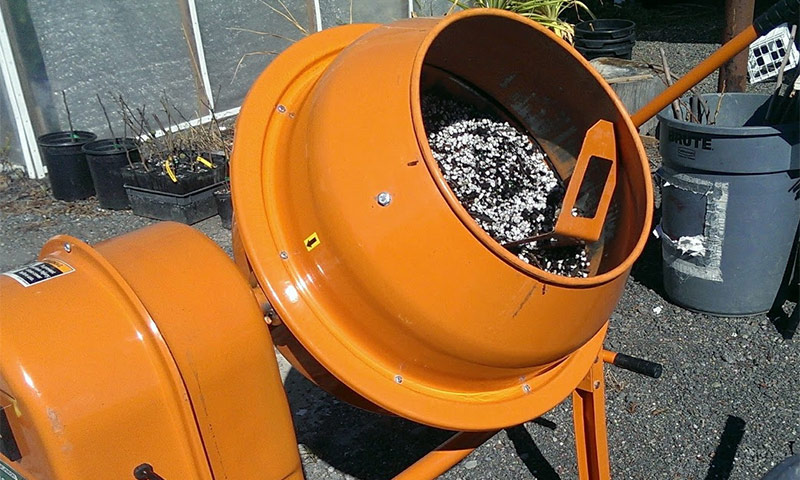
Content:
- The principle of operation and the construction of the concrete mixer
- The difference between forced and gravity type concrete mixers, their advantages and disadvantages
- What type of transmission is the best crown or gear
- How to decide on the power unit
- Technical characteristics that must be considered when choosing a concrete mixer
- Which manufacturers should be trusted?
- Concrete Mixer Operating Rules
- Video. Concrete Mixer Selection
The principle of operation and the construction of the concrete mixer
Concrete mixer is designed for the preparation of cement mortar in a building site. It would seem at first glance, it is easier to buy ready-made concrete, but there are some “buts” here. Firstly, after calculating the difference in the cost of the finished concrete mortar and its components, you will realize that with a large amount of work, the new concrete mixer will pay off very soon. Secondly, the preparation of the solution on your own allows you to adjust its quantity in accordance with changes in current plans.
It should be borne in mind that the concrete solution must be mixed all the time, otherwise it will quickly set. If you were unable to correctly assess the amount of work that a team of your workers will be able to do in the very near future, or for some reason your plans were violated, it turns out that the money spent on buying concrete will be thrown into the wind (moreover, you still have to pay for its disposal).
There are many varieties of concrete mixers, but all of them have three main structural elements:
Working capacitycalled a “drum” or “pear”. It actually during rotation and there is a mixture of components of the concrete mortar components. To improve the quality of concrete mixing, blades are located inside the tank, which, depending on the type of concrete mixer, can either be fixed rigidly to the walls of a rotating drum, or, having their own drive, rotate inside a stationary container. The volume of the "pear" can vary from several tens to several hundred liters.
Power block, consisting of an engine and transmission, converts the energy into rotational motion necessary to mix the contents of the working tank.
Bed - a construction of metal pipes and / or profiles that holds the working capacity and power unit. If this frame is equipped with wheels, then the concrete mixer becomes mobile.
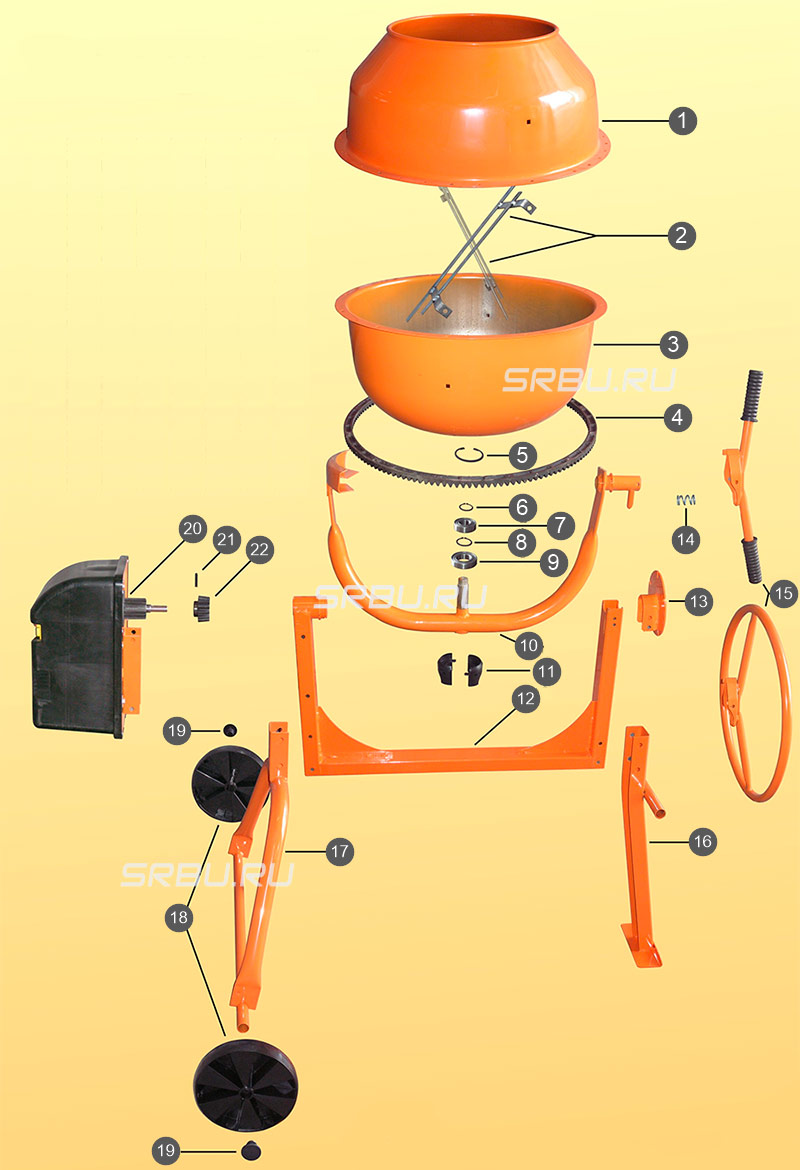
1. The top of the pear.
2. Blades.
3. The lower part of the pear.
4. Gear ring.
5. Corkscrew ring.
6. Snap ring bearing.
7. Bearing.
8. Snap ring bearing.
9. Bearing.
10. Cradle.
11. Anther.
12. Frame.
13. Control disk.
14. Spring.
15. A circle.
16. Footboard.
17. Footrest for wheels.
18. Wheels.
19. Cork for wheels.
20. Engine.
21. Corkscrew.
22. Gear.
The difference between forced and gravity type concrete mixers, their advantages and disadvantages
By the method of mixing, all concrete mixers can be divided into two groups - with gravitational mixing and with forced mixing.
Gravity type
You, for certain, had to see mixers of this variety - they are distributed much wider than forced. As you might guess, the principle of their action is based on gravity. Mixing occurs in a drum rotating around its axis, and this axis is not located vertically, but at a certain angle (sometimes even completely). The components of the future mixture, having reached the highest point, fall down under the action of gravity, due to which they are mixed. Such concrete mixers are cheaper and easier to operate than forced ones, but their mixing quality is somewhat lower.
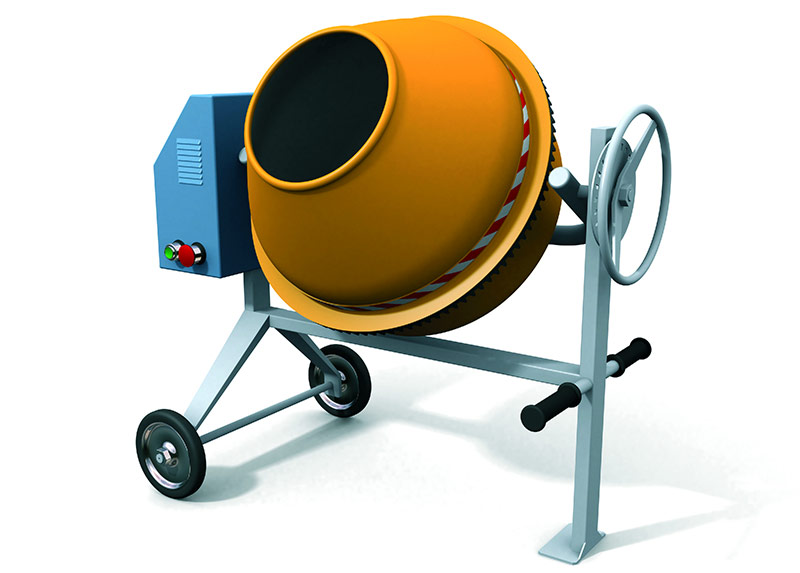
Forced type
In concrete mixers with forced mixing, the working capacity during the operation of the apparatus remains stationary - the blades located in it rotate. This method of mixing is much more effective, as a result of which the mixture quickly reaches a uniform consistency. However, they are not without drawbacks: firstly, the high price, and secondly, more complex, and therefore more expensive repairs in the event of a breakdown, and it is easier to disable them than gravitational ones, because they are only intended to work with fine-grained components.
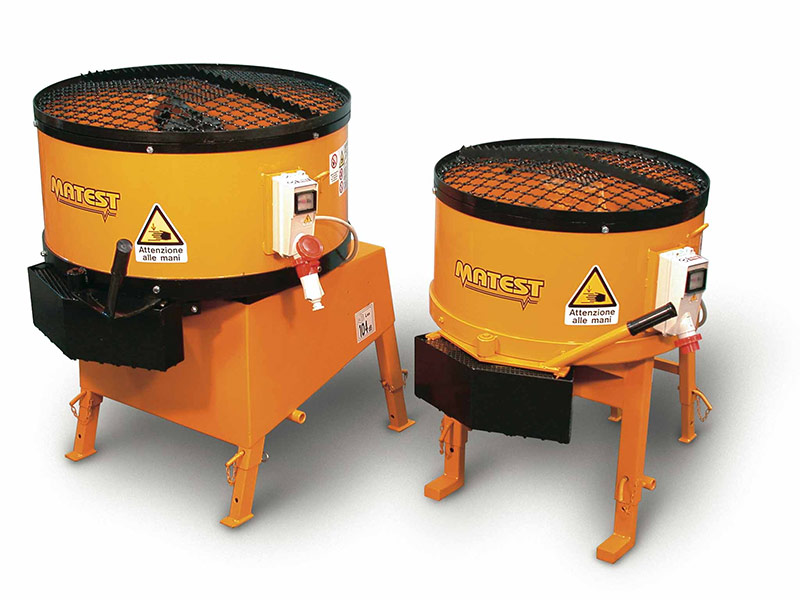
What type of transmission is the best crown or gear
The transmission of torque from the rotor of the engine to the working capacity, in gravitational mixers, can also be implemented in various ways. Gearboxes and crown concrete mixers are distinguished here.
Gear type
In such concrete mixers, the gearbox is located in a separate housing. These are quite reliable and, most importantly, quiet units. It is clear that they are not cheap. In addition, in the event of a breakdown, you have to change the entire gear unit, and often the engine, which is almost equivalent to buying a new concrete mixer. In general, they require more careful operation.
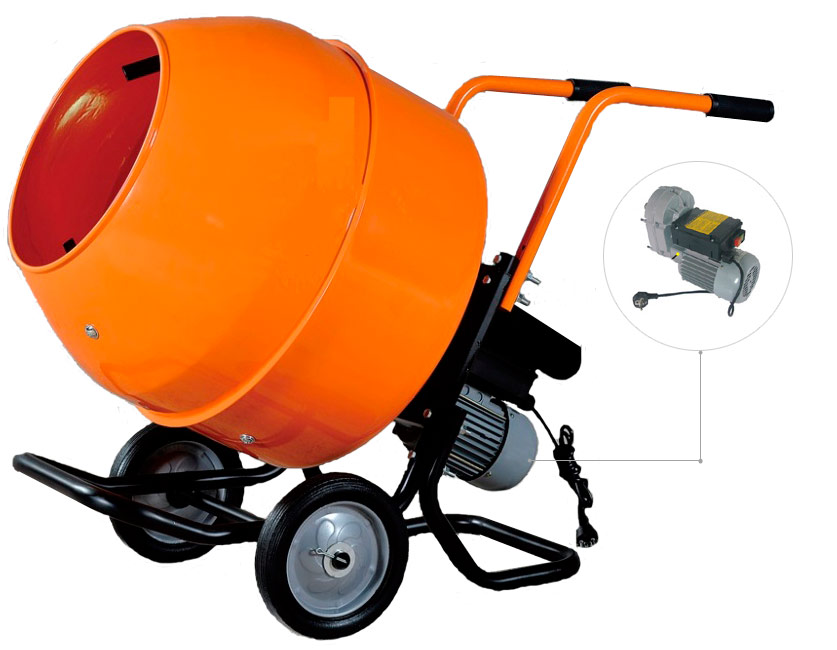
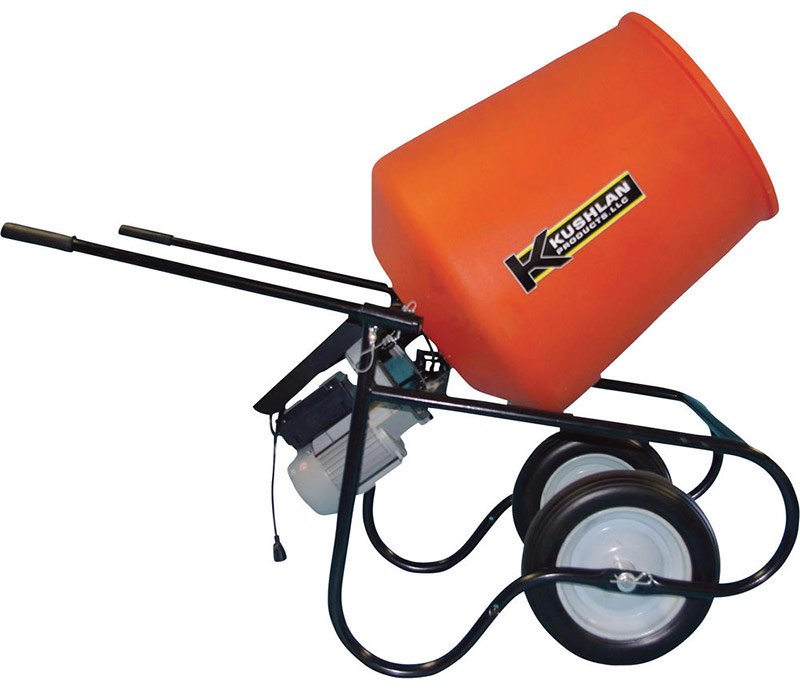
Crown type
Concrete mixers are more popular among builders, in which a gear wheel is located around the circumference of the working tank - the crown. In the process, the teeth of the crown cling to the drive gear, so that the rotational movement is transmitted from the engine to the drum. Crown concrete mixers are much cheaper than gear mixers. Of course, the crown often goes out of standing, but its replacement is only 1-2 hours of work and 1-2 thousand rubles for spare parts, which is not comparable with the replacement of the gear unit and / or the entire engine.
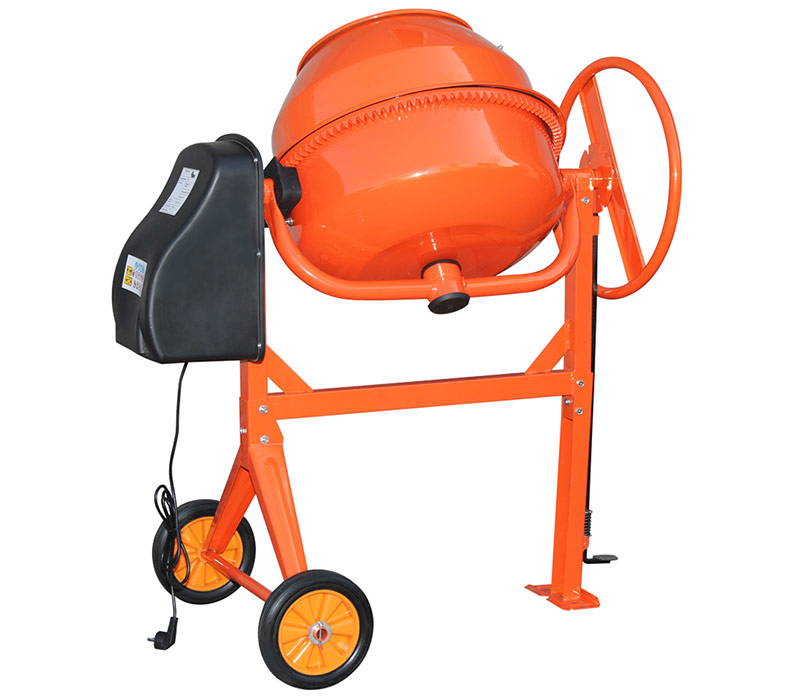
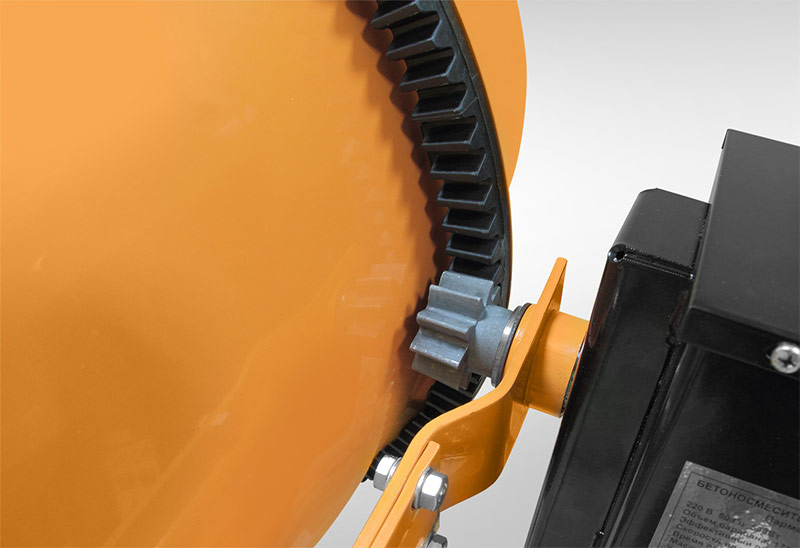
The wear of the crown is promoted by such negative factors as friction, which is much worse when cement, sand and other abrasive contaminants get in, prolonged exposure to atmospheric precipitation, accidental impacts, etc. In order not to have to change the crown too often, you need to not only be careful about the technique, but also competently approach the process of selecting the material of the part.
The crown can be made of the following materials:
- Cast iron.
- Steel.
- Plastic.
- Polyamide.
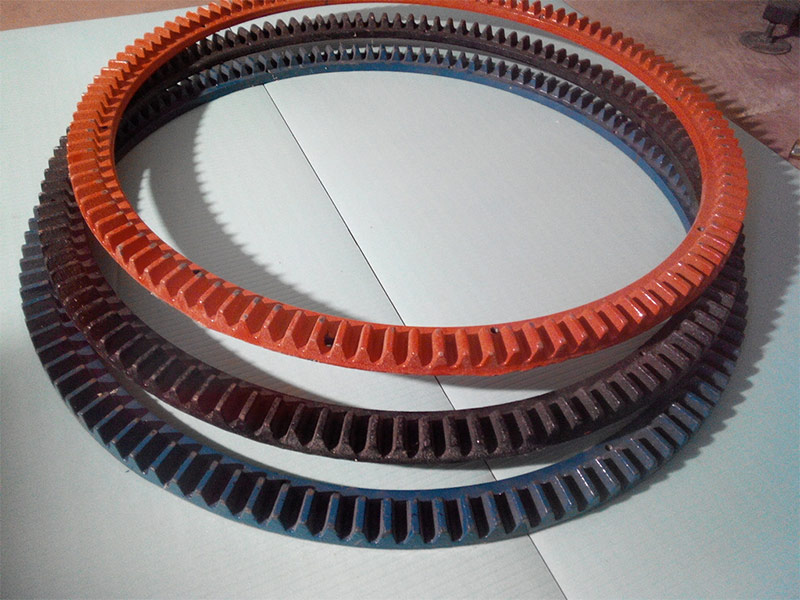
If a concrete mixer is purchased for private construction with a small amount of work during the day, then models with a cast iron or plastic crown are suitable. Wrought iron wreaths are brittle and, in addition, they rattle strongly during operation. Plastic ones work silently, but wear out quickly. However, with a bunch of shortcomings, both of them have one indisputable advantage - low cost. If we are talking about larger-scale construction, then here concrete mixers with cast-iron or plastic crowns will not work - steel is required.
Steel crowns work relatively quietly, but their main advantage is not this, but their durability, which is very important in the conditions of daily hours of operation. More recently, polyamide crowns appeared on the market, quickly gaining popularity among professionals. Possessing all the advantages of plastic (light weight, quiet operation, corrosion resistance), they are also very durable.
How to decide on the power unit
According to the type of drive, the concrete mixers are divided into mechanical (manual), electric and equipped with an internal combustion engine.
Electric Concrete Mixers
This type of concrete mixer is the most common.
Such mixers are convenient and unpretentious, all that is required for their work is access to a power supply network with a voltage of 220 V (for small “household” units) or 380 V (for powerful high-performance concrete mixers).
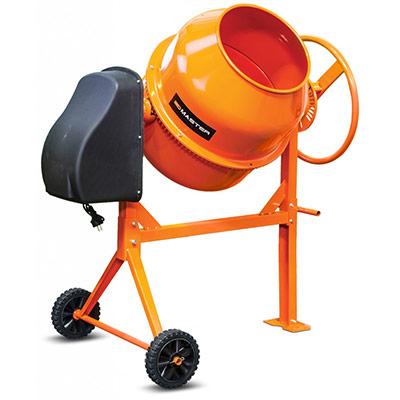
Motor-driven concrete mixers
Concrete mixers driven by an internal combustion engine, for a number of reasons, are not very popular among builders and finishers. Their main disadvantages include noise operation and the presence of exhaust, i.e., such units are designed only for outdoor use. In addition, internal combustion engines, as a rule, require more attention than electric motors. However, motorized concrete mixers are indispensable in those cases when the object under construction is located at a considerable distance from the power line, and the installation of its own electric generator for some reason is impossible or impractical.
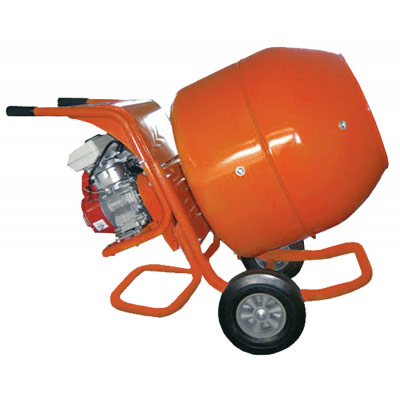
Hand driven
Like concrete mixers equipped with internal combustion engines, manual ones are electrically independent - they can be used for tens and hundreds of kilometers from the nearest access point to the power grid. They are very light, and therefore more mobile than their "counterparts" with internal combustion engines or electric motors. Their main advantage is low cost. And you will not have to spend money on energy sources (electricity or fuel for internal combustion engines) and spare parts (there is simply nothing to break!). However, it is advisable to use mechanical concrete mixers only when the amount of work is small, and therefore, a little concrete is needed - we can talk, for example, about building a cellar, concreting tracks on a site or repair and finishing work. For larger-scale construction, productivity will not be enough.
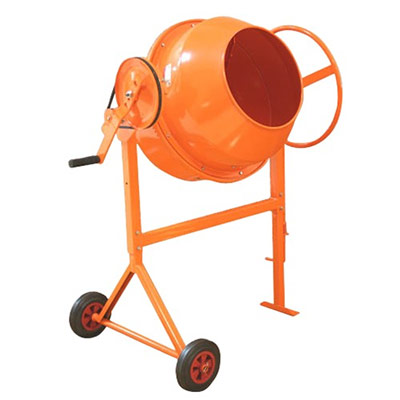
Technical characteristics that must be considered when choosing a concrete mixer
Suppose you have already determined which type of concrete mixer best suits your needs - forced or gravity, gear or crown, manual, with a motor or electric drive. What other parameters should I look for when choosing a specific model?
Volume
The capacity of the concrete mixer directly depends on the volume of the working capacity. However, it cannot be argued that mixers with a large drum are good, but with a small drum they are bad, or vice versa - it all depends on the intensity and amount of work that you plan to carry out. On a large-scale construction site, a small concrete mixer will slow down the process - it will not be able to “give out” the necessary amount of concrete, which means that the workers will stand idle. If the planned amount of work is small, then the purchase of a large concrete mixer is unjustified - firstly, it is unlikely to pay off, secondly, it will take up too much space on a small object, and thirdly, a small amount of cement mortar will simply “smear” over its walls.
To make it easier for you to sort out which concrete mixer to choose, select several size groups:
25-50 liter concrete mixers
They will help with the decoration of rooms (laying ceramic tiles, plaster, etc.).
50-100 liter concrete mixers
It will be needed by those who are going to erect a small outbuilding (garage, cellar, bathhouse, etc.).
100-200 liter concrete mixer
Indispensable in the construction of a private house.
200-300 liter concrete mixers
They are in demand during the construction of houses on several floors - per hour they are capable of producing more than two cubic meters of mortar, which will ensure the continuous work of a team of 8-10 masons.
Power
The power of a concrete mixer is a parameter directly related to its volume. The greater the amount of concrete mortar the unit must mix during one cycle of its operation, the more powerful the engine it needs.An engine with a capacity of no more than 1000 watts is quite enough for household concrete mixers with a working capacity of less than 100 liters. With the solution of the tasks facing professional builders, such concrete mixers can not help. Here more powerful models are required - with a drum of 300 or more liters and an engine with a power of 2000 watts or more. Such equipment allows for the production of large volumes of ready-mixed concrete per unit time and at the same time is able to work non-stop throughout the entire shift.
Voltage
As a rule, powerful professional concrete mixers with an electric drive are designed to operate on a three-phase network with a voltage of 380 V, and small household models are “content” with 220 V, although there are exceptions, albeit infrequently. Be sure to pay attention to this parameter, especially if it is planned to carry out work at a considerable distance from the access point to the power line - in this case you will need a generator, and the voltage it generates must correspond to the voltage of the equipment used.
Design Features
The structural elements and parameters listed in this section at first glance are insignificant. However, if you do not pay attention to them when buying a concrete mixer, it is possible that subsequently you will greatly regret it.
Concrete Unloading Device. To unload the finished mortar from the concrete mixer in small-volume models, a special lever is provided or (more often) a steering wheel, which allows to overturn the working capacity and thereby empty it. If you compare the lever and the helm, then the latter is the most convenient option.
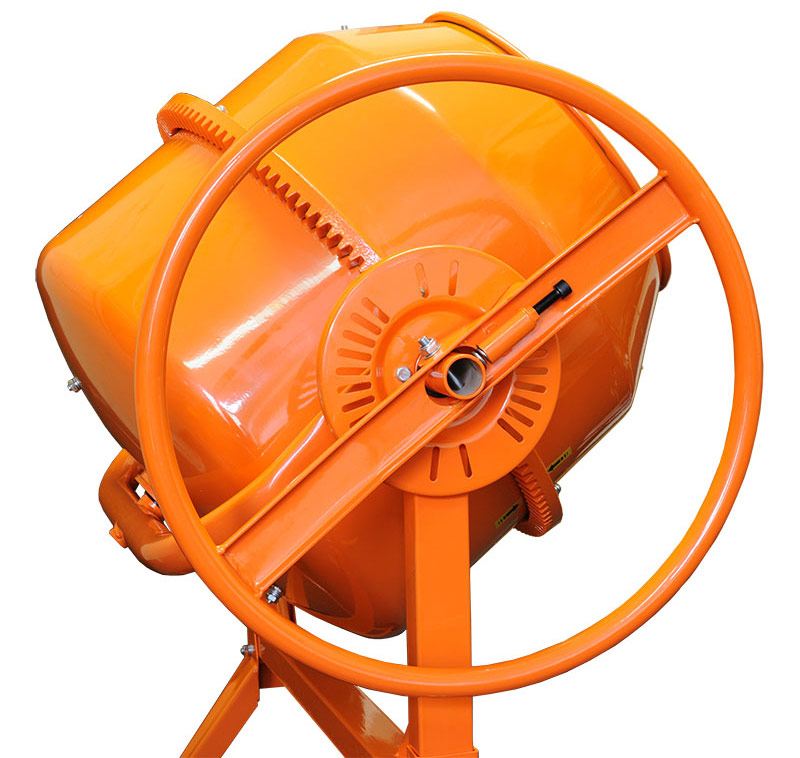
In large concrete mixers capable of preparing 300 or more liters of concrete mix in one operation cycle, an automatic loading and unloading system is provided - a skip lift. However, we are trying to figure out which concrete mixer is better to buy for the home, which means that such "giants" are outside the scope of our interests.
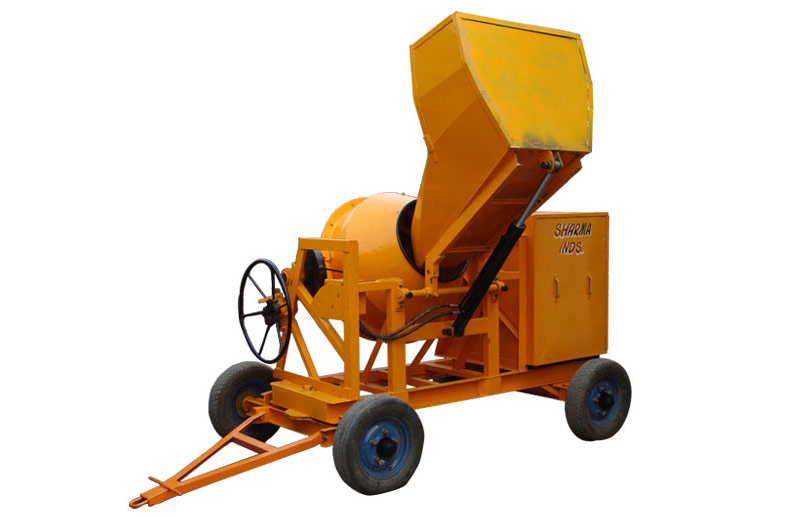
Wheels. Most of the relatively small concrete mixers are equipped with wheels, which makes it easy to move equipment around the construction site.
When choosing a specific model, you need to pay attention to whether it has a device for locking the wheels and an additional reliable support in the base of the bed to increase stability during operation of the unit.
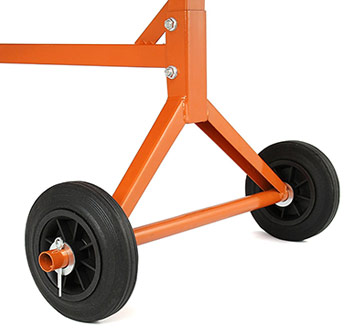
Working capacity. Since the drum of the concrete mixer is its main working element, special attention must be paid to its strength. There are two technologies for manufacturing drums - deep drawing on a hydraulic press and bending of cut steel sheets on rollers with their subsequent welding. The smooth sides of the working tanks manufactured in the first way literally attract the eyes of potential buyers. But the main thing in the drum of the concrete mixer is not beauty, but strength, but in this case one has to doubt it. Such products are made of steel with a thickness of not more than 1.5-2.0 mm, which means that very soon they can lose weight. Drums made in the second way, because of their welds, are not so attractive from an aesthetic point of view, but, being made of a thick sheet of metal, are incomparably more reliable.
Bearing. There are two ways to locate a concrete mixer bearing. It can be mounted inside a pear or inside a frame. The option with the location of the bearing inside the pear is not a very good solution from a practical point of view. It is more difficult to change and it is more often exposed to water and failure.
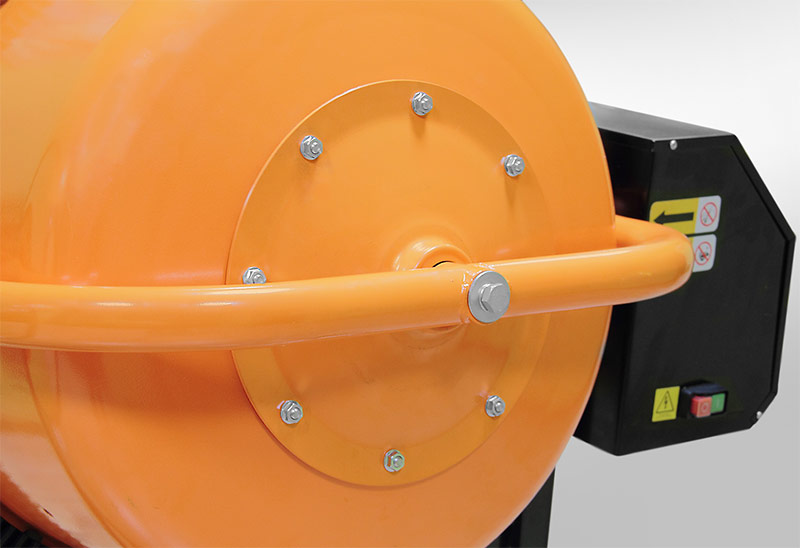
The location of the bearing inside the pear.
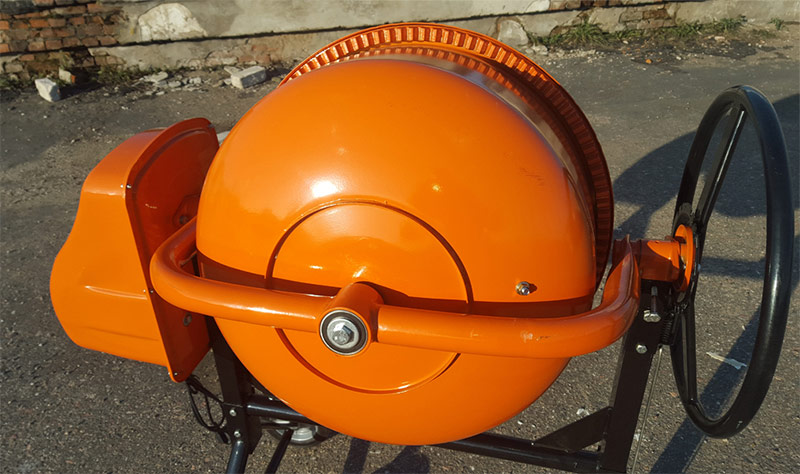
The location of the bearing inside the frame.
Overload sensor. If you, intentionally or through negligence, exceed the recommended mass of the loaded components of the future mixture and / or the non-stop time of the concrete mixer recommended by the manufacturer, the engine may not be able to cope with the load, resulting in failure.An overload sensor will help to avoid this, which will turn off the motor when the temperature in its winding rises above the set value.
Concrete Mixer Color. At first glance, the color of the concrete mixer is absolutely irrelevant. If you purchase a small unit that only you will use, it really is. If it is intended to operate a concrete mixer on a large construction site, where several workers will be working simultaneously, then we recommend that you do not neglect the rules of SNIP. The latter prescribe the painting of potentially dangerous equipment in bright colors - yellow, orange or red. This will help to avoid emergencies when one of those present at the facility simply did not notice a working device, as a result of which the equipment itself may suffer in the best case, and people in the worst case.
Which manufacturers should be trusted?
It is very difficult to answer the question unequivocally whose concrete mixers are the best by far. Croatian Limex, Czech Zitrek, German Denzel are popular among builders. Those for whom a foreign label is not an end in itself are pleased to use Russian-made concrete mixers, which are not inferior in quality to their foreign counterparts. Among them are Prorab, Belamos, Profmash, and, of course, Lebedyansky Zavod, whose products are consistently on the first lines of various professional ratings. It should be noted that domestic equipment has at least two indisputable advantages: firstly, it is designed taking into account the climatic conditions of our country, and secondly, it is much easier to find the necessary spare parts and consumables for it than for foreign one.
Regardless of whether you are aimed at acquiring exclusively European equipment or trusting Russian manufacturers, we advise you not to focus on this information only in the information contained in advertising booklets. The opinion of real users is much more important. Talk with participants in various construction forums, talk with a friend who recently poured foundation for a house on his site, ask builders working nearby - and you can make your own independent rating of manufacturers and understand which concrete mixer is better to choose for your goals.
We invite you to familiarize yourself with our rated best concrete mixersbased on user reviews.
Concrete Mixer Operating Rules
Now you have a general idea of how to choose a concrete mixer. It would be possible to end this conversation today, but I’d like to say a few more words ... Regardless of which concrete mixer you get - household or professional, expensive or cheap - you need to follow some simple rules when using it. Only in this case, your purchase will not disappoint you, the new equipment will last a long time, and you will not become the hero of the accident chronicle.
 |
Before starting work, it is necessary to check the reliability of all threaded connections and, if necessary, tighten the bolts and nuts that are loose during operation. Make sure that the unit is in a stable position, set the drum in the recommended operating position. Subsequent start-up of the concrete mixer at idle will allow you to finally make sure that the equipment is in good working order and is ready for use. |
 |
The loading of the mixture components is carried out only in a rotating drum. It is recommended to observe the following sequence: first crushed stone is loaded, then cement and sand, and only in the final water. |
 |
The standard mixing time for the components of the mixture is 2-3 minutes.It is not recommended to increase the mixing time - the quality of the finished concrete will only deteriorate. |
 |
At the end of the working cycle, the drum is tilted with its neck down to unload the finished solution. If the work of the concrete mixer is not finished, the “pear” is returned to its working position and the cycle is repeated. |
 |
Upon completion of the work, the working capacity of the concrete mixer must be thoroughly rinsed with water. Do not postpone this procedure for a long time, because concrete sets quickly enough. It depends on how thoroughly you clean the drum and other structural elements of the unit, whether your next conversation with the concrete mixer will be just as comfortable and enjoyable. |
 |
Remember that the concrete mixer is a potentially hazardous equipment, therefore any repair and maintenance is necessary only with the engine turned off. |
